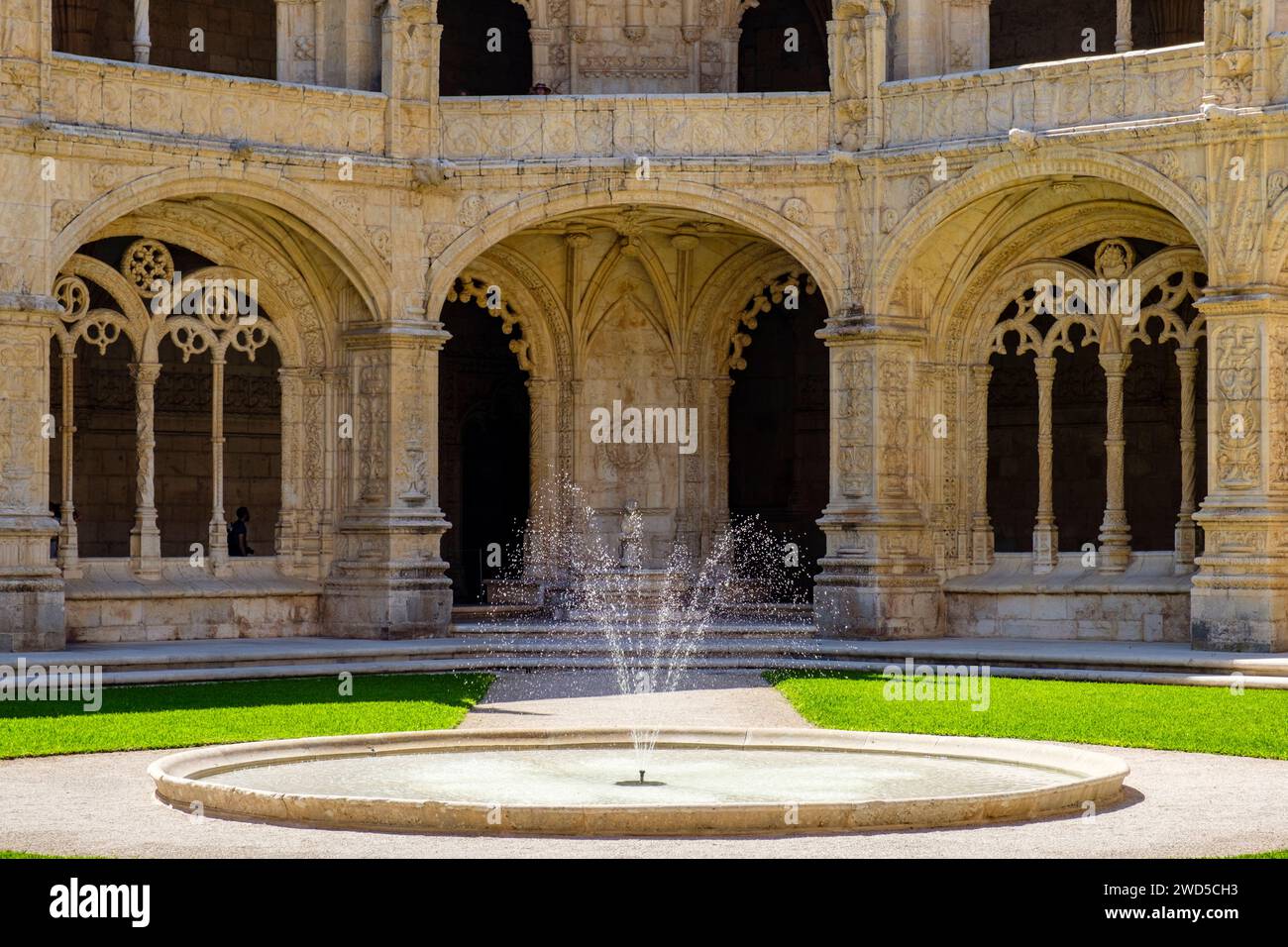Interior courtyard, archs and columns of Jeronimos Monastery, Mosteiro dos Jerónimos, late Portuguese Gothic Manueline style of architecture, Lisbon

Image details
Contributor:
Rubens Alarcon / Alamy Stock PhotoImage ID:
2WD5CH3File size:
68.7 MB (3.3 MB Compressed download)Releases:
Model - no | Property - noDo I need a release?Dimensions:
6000 x 4000 px | 50.8 x 33.9 cm | 20 x 13.3 inches | 300dpiDate taken:
15 June 2023Location:
Jerónimos Monastery, Praça do Império 1400-206 Lisboa, PortugalMore information:
The Jerónimos Monastery or Hieronymites Monastery (Portuguese: Mosteiro dos Jerónimos, is a former monastery of the Order of Saint Jerome near the Tagus river in the parish of Belém, in the Lisbon Municipality, Portugal. It became the necropolis of the Portuguese royal dynasty of Aviz in the 16th century but was secularized on 28 December 1833 by state decree and its ownership transferred to the charitable institution, Real Casa Pia de Lisboa. The Jerónimos Monastery is one of the most prominent examples of the late Portuguese Gothic Manueline style of architecture in Lisbon. It was erected in the early 1500s near the launch point of Vasco da Gama's first journey, and its construction funded by a tax on the profits of the yearly Portuguese India Armadas. In 1880, da Gama's remains and those of the poet Luís de Camões (who celebrated da Gama's first voyage in his 1572 epic poem, The Lusiad), were moved to new carved tombs in the nave of the monastery's church, only a few meters away from the tombs of the kings Manuel I and John III, whom da Gama had served. In 1983, the Jerónimos Monastery was classified as a UNESCO World Heritage Site, along with the nearby Tower of Belém.